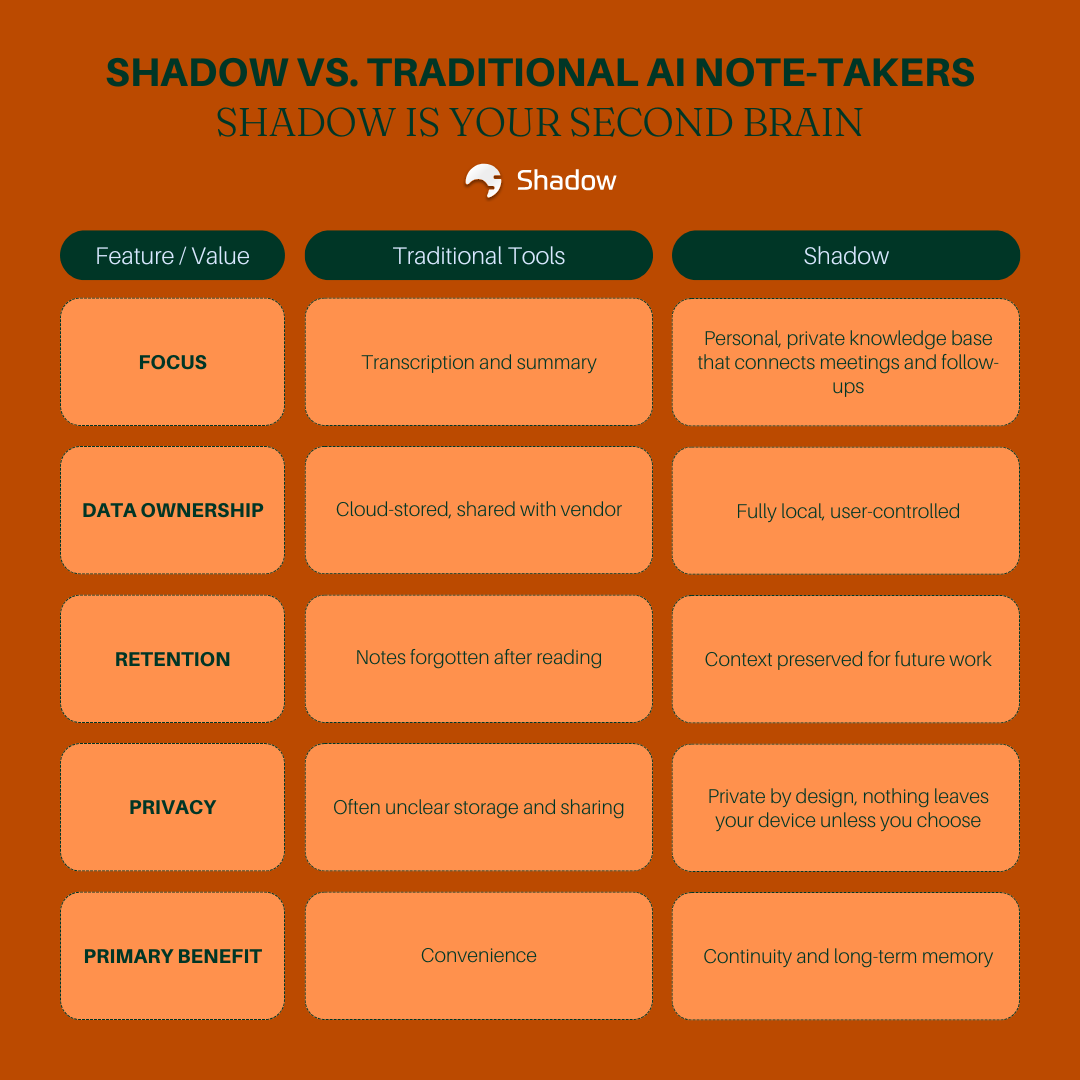Why teams obsess over retention and how to increase it
.png)


Every founder talks about growth. Few talk about what keeps it alive.
Most startups pour energy into acquisition. They celebrate sign-ups, new users, and traffic spikes. But real growth doesn’t come from getting people in the door. It comes from building something people quietly rely on, something that becomes part of how they think and work.
At Shadow, we learned that lesson early. In the beginning, we focused on reach. We wanted visibility, momentum, and more users. But growth without retention is an illusion. People were trying Shadow, not living with it.
The real question was never how to attract more users. It was why the ones who stayed never left.
Retention tells you what users actually value. It cuts through opinions, feedback forms, and vanity metrics. If people keep returning, it means the product fits naturally into their routine. If they drift away, it means the value was temporary.
Retention is truth. It reveals the gap between what you think you’re selling and what people are actually buying.
When we looked at our own data, we saw something unexpected. People didn’t stay for the meeting notes themselves. They stayed because Shadow helped them remember. It became a private space where everything said in a meeting was saved, structured, and easy to return to later.
That was when we understood what we were really building. Shadow wasn’t just a note-taking tool. It was a personal knowledge base that kept every meeting, idea, and decision in one place , quietly working in the background so users could focus on thinking, not remembering.
Startups obsess over the first experience. They polish sign-up flows, perfect onboarding, and celebrate every first session. But the real work begins on day thirty.
The first day is curiosity. The thirtieth day is truth.
If the product still feels useful, it stays. If it fades into the background, users move on. Retention happens when the product keeps proving its value long after the excitement fades.
For Shadow, that meant designing around return moments. When someone reopens Shadow, they see exactly what they discussed last time. Their notes, screenshots, and context are there waiting. They can recall decisions, reconnect threads, and continue where they left off.
Retention happens when users feel like time is never wasted.
Most products still try to drive retention through notifications, badges, and re-engagement emails. That worked once, but not anymore. People don’t want to be reminded to return. They want a reason to return.
The strongest retention moat now is context.
Products that remember your world, your tasks, your conversations, your unfinished thoughts, make it effortless to pick up again. They create a sense of continuity. And once you feel that, switching to another product feels like starting from scratch.
That is what Shadow does. It captures what you say, what you see, and what you decide, then keeps it organized for you. It becomes a quiet layer of memory that belongs only to you. Nothing is shared, nothing leaves your device unless you choose to. It is your private workspace for everything that matters.

Retention isn’t static. It grows with time. Every time you return to a product that remembers where you left off, it becomes more useful. That loop compounds. It’s not just retention. It’s familiarity, comfort, and trust.
Shadow doesn’t chase engagement. It earns it by being there when you need it. By turning meetings, ideas, and plans into something permanent, it creates a kind of reliability that users don’t have to think about.
When that happens, retention stops being a strategy. It becomes a habit.
Acquisition gets you attention. Retention earns you trust.
At Shadow, we stopped trying to remind people to come back. Instead, we built something worth coming back to. A private, personal knowledge base that remembers what you don’t have time to.
The future of retention will belong to products that understand the value of memory. The ones that respect privacy, preserve context, and give people the confidence that nothing important will be lost.
That is what keeps people coming back. Not growth tactics or push notifications. Just quiet usefulness that compounds over time.
